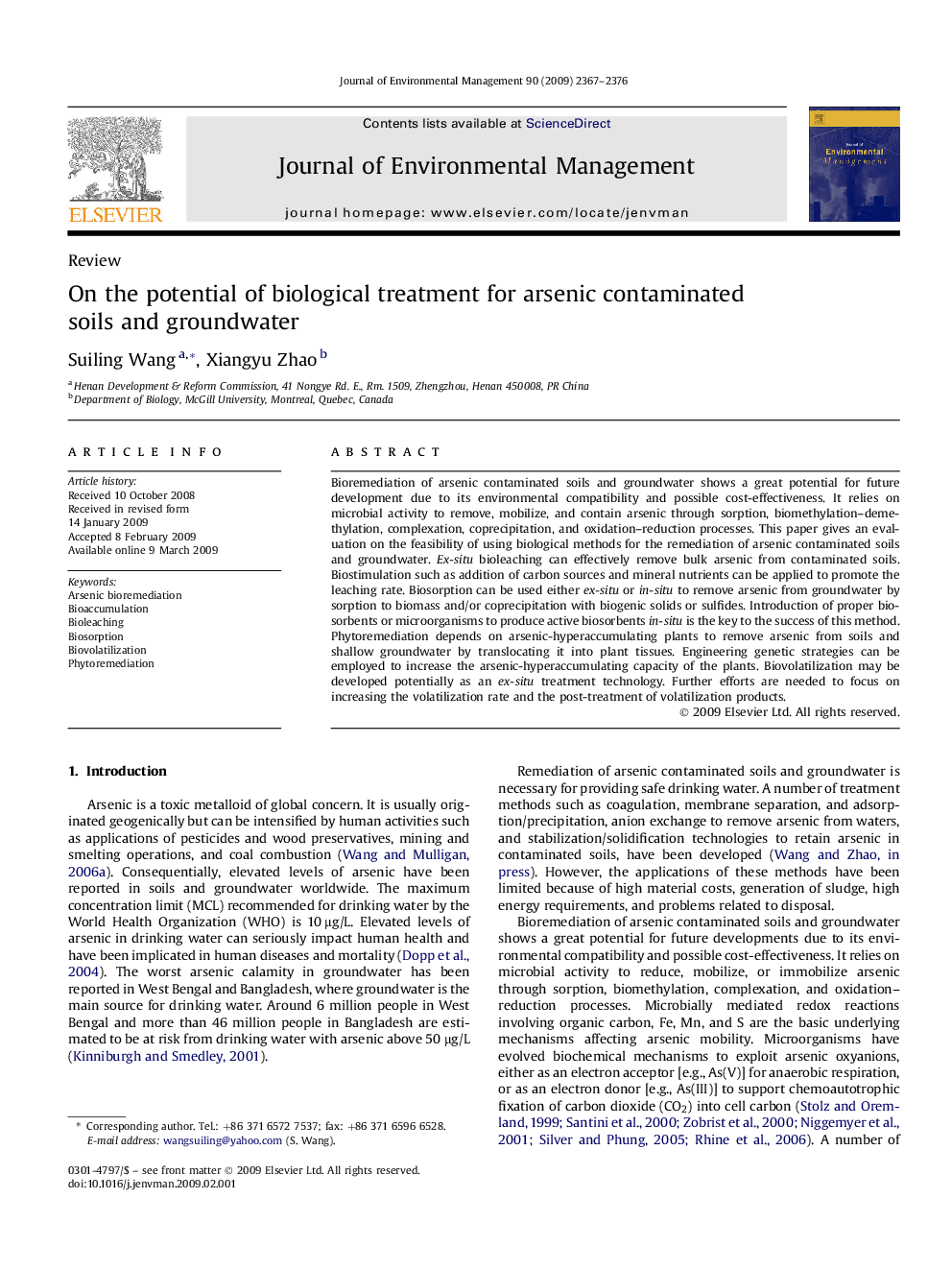| کد مقاله | کد نشریه | سال انتشار | مقاله انگلیسی | نسخه تمام متن |
|---|---|---|---|---|
| 1057731 | 947089 | 2009 | 10 صفحه PDF | دانلود رایگان |

Bioremediation of arsenic contaminated soils and groundwater shows a great potential for future development due to its environmental compatibility and possible cost-effectiveness. It relies on microbial activity to remove, mobilize, and contain arsenic through sorption, biomethylation–demethylation, complexation, coprecipitation, and oxidation–reduction processes. This paper gives an evaluation on the feasibility of using biological methods for the remediation of arsenic contaminated soils and groundwater. Ex-situ bioleaching can effectively remove bulk arsenic from contaminated soils. Biostimulation such as addition of carbon sources and mineral nutrients can be applied to promote the leaching rate. Biosorption can be used either ex-situ or in-situ to remove arsenic from groundwater by sorption to biomass and/or coprecipitation with biogenic solids or sulfides. Introduction of proper biosorbents or microorganisms to produce active biosorbents in-situ is the key to the success of this method. Phytoremediation depends on arsenic-hyperaccumulating plants to remove arsenic from soils and shallow groundwater by translocating it into plant tissues. Engineering genetic strategies can be employed to increase the arsenic-hyperaccumulating capacity of the plants. Biovolatilization may be developed potentially as an ex-situ treatment technology. Further efforts are needed to focus on increasing the volatilization rate and the post-treatment of volatilization products.
Journal: Journal of Environmental Management - Volume 90, Issue 8, June 2009, Pages 2367–2376